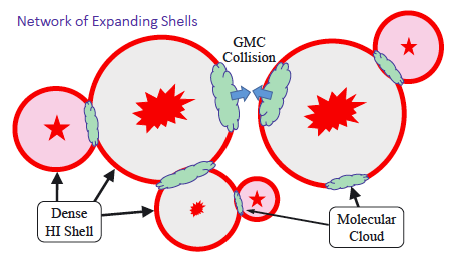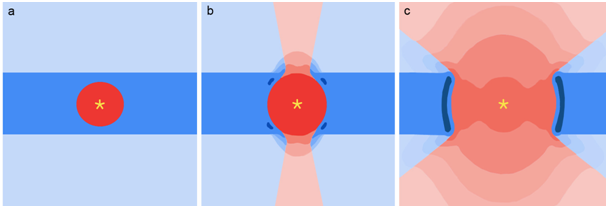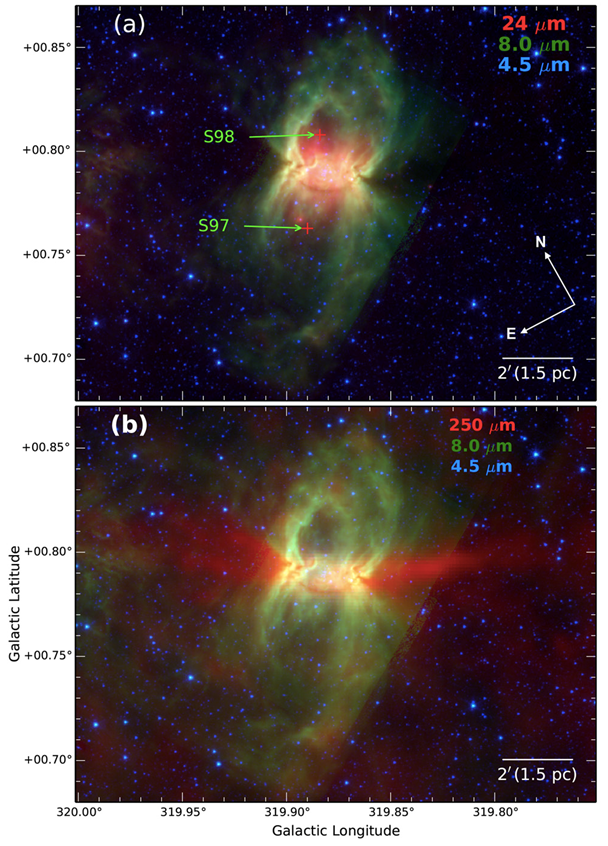HII regions and filaments (ongoing project)
Research
Filaments are elongated structures of gas and dust that host star formation. The Herschel Space Observatory reveals that these filaments are ubiquitous in our Galaxy. They are also observed in external galaxies and play a crucial role in star formation (Fukui et al. 2019) What is the role of HII regions in the formation and evolution of filaments ? We are interested in the possible role of expanding bubbles (HII regions and HI supershells) in the formation of filaments.
Expanding bubbles and the formation of filaments
In 2015, Inutsuka et al. proposed a scenario for the role of expanding shells in the formation of filaments. In collaboration with P. André (CEA-Saclay) we study this possible scenario thanks to ground and space-based observations.

Schematic view of the possible role of expanding shells in the formation of molecular clouds and filaments (Inutsuka et al. 2015).
The peculiar case of bipolar HII regions
Following the Strömgren theory (Strömgren, 1939), HII regions are expected to have a spherical morphology. However, depending on the distribution of the surrounding medium and on the inclination of the region with respect to the line of sight, different morphologies are observed. An interesting case is the one of bipolar HII regions. This morphology is observed when the massive star(s) reponsible for the ionization form in a dense filament.

Schematic view of the formation of a bipolar HII region (Deharveng et al. 2015).
This bipolar morphology is interesting because at the waist of the bipolar HII regions massive clumps are observed, offering an interesting perspective to study triggered high-mass star formation.

Example of a Galactic bipolar HII region (Deharveng et al. 2015)
References
Deharveng et al. 2015, A&A 582, A1
Fukui et al. 2019, ApJ, 886, 14
Inutsuka et al. 2015, A&A, 580, A49
Samal et al. 2018, A&A, 617, A67
Strömgren, B. 1939, ApJ, 89, 526
Zavagno et al. 2020, A&A, 638, A7
Back to Research page